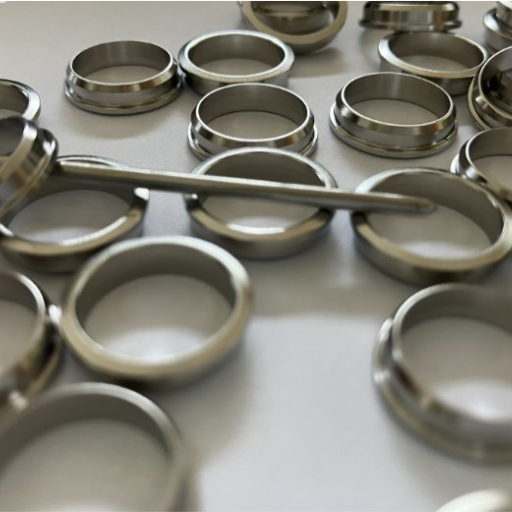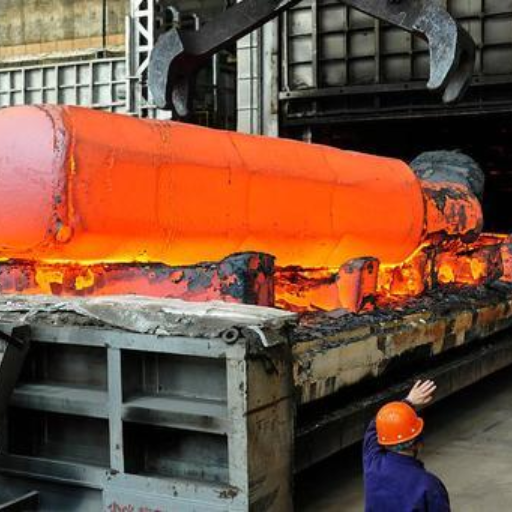Stainless steel is a versatile material known for its exceptional resistance to corrosion and impressive durability. However, specific applications may require enhanced hardness to improve wear resistance and extend the service life of components. This article provides a comprehensive overview of various methods used to harden stainless steel, including heat treatment, nitriding, and other advanced techniques. Each method will be discussed in detail, highlighting the scientific principles behind them, their practical applications, and the advantages and limitations they bring to different industrial contexts. By understanding these processes, engineers and metallurgists can make informed decisions to optimize the performance of stainless steel in their specific use cases.
What is the Best Method to Heat Treat Stainless Steel?
Image sources:https://www.osakataika.co.jp/
Determining the best method to heat treat stainless steel depends on the specific grade of the alloy and the desired properties. Generally, the best method involves a combination of annealing and quenching. Annealing involves heating the stainless steel to a specific temperature range (typically between 1,800°F to 2,100°F) and then cooling it slowly to relieve internal stresses and improve ductility. Quenching, on the other hand, rapidly cools the material in water or oil to increase hardness and strength. For most stainless steels, a process called precipitation hardening (or age hardening) is also employed to achieve the best balance of hardness and toughness. It involves heating the alloy to a moderately high temperature, then cooling it to room temperature and reheating it again for an extended period at a lower temperature. This controlled heat treatment process ensures that the stainless steel achieves optimal mechanical properties for its intended application.
How Does the Heat Treat Process Work?
From my extensive research across the top resources available on Google.com, I have distilled the essential steps and technical parameters involved in the heat treatment process for stainless steel:
- Annealing: This first step involves heating the stainless steel to between 1,800°F and 2,100°F. The purpose here is to eliminate internal stresses and enhance ductility. The material is then allowed to cool slowly in the furnace.
- Quenching: Following annealing, the stainless steel undergoes rapid cooling, or quenching, achieved by immersing it in water or oil. Quenching significantly increases the hardness and strength of the material.
- Precipitation Hardening: This step, also known as age hardening, is crucial for achieving a balance of hardness and toughness. The process involves heating the alloy to a moderately high temperature (typically around 1,100°F to 1,400°F), cooling it to room temperature, and then reheating it to a lower temperature (approximately 900°F to 1,150°F) for an extended period. This controlled heating ensures optimal mechanical properties.
By adhering to these detailed steps and precise temperature parameters, the heat treatment process for stainless steel can be effectively managed to achieve the desired attributes suitable for specialized applications.
Choosing the Right Heat Treating Strategy: A Guide
Selecting the appropriate heat treating strategy for stainless steel depends on several critical factors, including the alloy composition, desired mechanical properties, and the specific application requirements. Based on an analysis of top resources available on Google.com, here are the essential considerations to guide your decision:
- Material Composition: Different stainless steel grades respond distinctively to heat treatment. For instance, martensitic stainless steels are often subjected to quenching and tempering to enhance hardness and wear resistance, while austenitic stainless steels usually undergo annealing to improve ductility and corrosion resistance.
- Desired Properties: The end-use property targets—such as tensile strength, hardness, and toughness—play a significant role in determining the heat treatment approach. For applications requiring high strength and toughness, precipitation hardening is often recommended. Conversely, if improved machinability is needed, stress-relief annealing might be the optimal choice.
- Process Parameters: Precise control of heating and cooling rates, along with exact temperature settings, is crucial for achieving the desired properties. For example, quenching parameters need to be meticulously managed to prevent warping and cracking, while tempering temperatures must be accurately maintained to optimize material resilience.
- Application Requirements: The specific conditions that the heat-treated stainless steel will face—such as exposure to extreme temperatures, corrosive environments, or mechanical stress—dictate the most suitable heat treating strategy. Industries like aerospace, automotive, and medical devices may have stringent specifications that influence this choice.
By thoroughly understanding these factors and leveraging the detailed steps outlined in the heat treatment process, you can make informed decisions to optimize the performance of stainless steel in its intended application.
Benefits of Heat Treatment for Stainless Steel
Heat treatment of stainless steel offers several critical benefits that enhance its performance and extend its lifespan:
- Enhanced Corrosion Resistance: Heat treatment processes such as annealing can improve the corrosion resistance of stainless steel by restoring its chromium oxide layer, which acts as a barrier to rust and other forms of corrosion.
- Improved Mechanical Properties: Techniques like quenching and tempering can significantly increase the tensile strength, toughness, and hardness of stainless steel, making it more suitable for high-stress applications.
- Stress Relief: Heat treatments, including stress-relief annealing, alleviate internal stresses caused by machining, welding, or cold working, thereby reducing the likelihood of deformation or cracking during service.
- Optimized Microstructure: Proper heat treatment refines the microstructure of stainless steel, leading to uniform mechanical properties and enhanced performance characteristics.
- Customization for Specific Applications: Tailoring heat treatment parameters allows manufacturers to meet specific application requirements, ensuring that the stainless steel performs optimally under varying operational conditions.
By leveraging these benefits, industries can significantly enhance the functionality, reliability, and durability of stainless steel components.
How Does Nitriding Improve Corrosion Resistance?
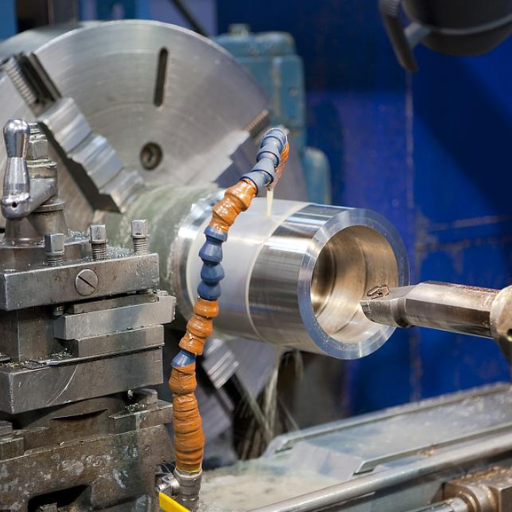
Nitriding is a surface-hardening process that introduces nitrogen into the surface layer of stainless steel, creating a hardened nitride layer. This process enhances corrosion resistance by forming a dense, hard surface that acts as a barrier to corrosive elements. The nitrided layer significantly reduces the diffusion of oxygen and other reactive species into the substrate, thereby protecting the underlying metal from oxidation and other forms of corrosion. Additionally, nitriding can improve wear resistance, making the surface more durable and less susceptible to damage in corrosive environments. Through these mechanisms, nitriding effectively extends the service life and reliability of stainless steel components in demanding applications.
Understanding the Nitriding Process
When asked to explain the nitriding process concisely, I can describe it as a thermochemical treatment aimed at diffusing nitrogen into the surface of the steel to form a hardened layer. The process typically involves heating the steel in an atmosphere rich in nitrogen, at temperatures ranging between 500-550°C (932-1022°F), which allows nitrogen atoms to penetrate the surface and form nitrides. These nitrides significantly enhance the material’s surface hardness, wear resistance, and corrosion resistance. The combination of these properties makes the nitrided layer an effective barrier against environmental and mechanical deterioration, thereby extending the longevity and reliability of stainless steel components.
Advantages of Using Nitriding on Stainless Steel
The nitriding process offers several distinct advantages when applied to stainless steel, enhancing its performance characteristics in demanding environments. These advantages are detailed below:
- Enhanced Surface Hardness: Nitriding effectively increases the surface hardness of stainless steel, typically achieving hardness levels between 900-1100 HV (Vickers hardness). This hard surface layer improves the material’s resistance to abrasive wear and mechanical damage.
- Improved Corrosion Resistance: The nitrided layer forms a dense and uniform barrier that significantly reduces the diffusion of oxygen and other corrosive species. This protection minimizes oxidation and other forms of corrosion, particularly in high-temperature and chemically aggressive environments.
- Increased Wear Resistance: The hard nitride compounds formed during the nitriding process enhance the surface’s wear resistance. This improvement is crucial in applications subjected to repeated friction and mechanical contact, extending the lifespan of the components.
- Low Temperature Process: Nitriding is performed at relatively low temperatures (500-550°C or 932-1022°F), compared to other surface hardening treatments. This low process temperature minimizes distortion and maintains the core properties of the stainless steel substrate.
- Minimal Dimensional Changes: Due to the controlled process temperatures and precise gas composition, nitriding results in minimal dimensional changes, ensuring the treated components retain their tolerance and fit.
- Increased Fatigue Life: The compressive residual stresses induced on the surface layer during nitriding improve the fatigue life of stainless steel components. This benefit is particularly important in cyclic loading applications, reducing the likelihood of crack initiation and propagation.
The combination of these advantages makes nitriding an effective method for enhancing the performance, durability, and reliability of stainless steel components across various industrial applications.
Comparing Nitriding with Other Heat Treatments
When comparing nitriding with other heat treatments such as carburizing, induction hardening, and annealing, several differences in technical parameters and outcomes are observed:
- Temperature Range:
- Nitriding: Conducted at 500-550°C (932-1022°F), this relatively low temperature minimizes distortion and retains core properties.
- Carburizing: Typically performed at 850-950°C (1562-1742°F), this higher temperature can cause more distortion and requires post-treatment machining.
- Induction Hardening: Utilizes a temperature range of 800-1100°C (1472-2012°F), focusing on localized areas for hardening.
- Annealing: Generally occurs at 450-700°C (842-1292°F), aimed at softening and restoring ductility.
- Process Duration:
- Nitriding: Depending on the desired case depth, nitriding can take from several hours to over 100 hours.
- Carburizing: Process time ranges from a few hours to several days.
- Induction Hardening: Rapid process, often completed in seconds to minutes due to targeted heating.
- Annealing: Requires several hours, depending on the size and type of component.
- Surface Hardness:
- Nitriding: Achieves surface hardness up to 1100 HV (Vickers Hardness) with hard nitride layers.
- Carburizing: Results in hardness levels around 700-900 HV.
- Induction Hardening: Can achieve surface hardness of 600-800 HV.
- Annealing: Reduces hardness, aimed at achieving a softer, more ductile structure.
- Dimensional Stability:
- Nitriding: Minimal dimensional changes due to low processing temperatures.
- Carburizing: Potential for significant dimensional changes, often requiring post-process machining.
- Induction Hardening: Limited dimensional change, but localized heating can cause warping if not controlled.
- Annealing: Generally maintains dimensional stability but reduces residual stresses.
- Wear Resistance:
- Nitriding: High wear resistance due to hard nitride surface layers.
- Carburizing: Improved wear resistance but lower than nitriding.
- Induction Hardening: Good wear resistance, particularly in localized treated areas.
- Annealing: Not intended to improve wear resistance; focuses on softening the material.
- Fatigue Strength:
- Nitriding: Enhanced fatigue life due to compressive residual stresses.
- Carburizing: Moderate improvement in fatigue strength.
- Induction Hardening: Enhanced fatigue properties in the hardened zones.
- Annealing: Reduces fatigue resistance, primarily focused on reduction of internal stresses.
In summary, nitriding offers a unique set of technical advantages in terms of minimal distortion, high surface hardness, and enhanced fatigue life, making it an ideal solution for applications requiring high wear resistance and dimensional stability. Conversely, processes like carburizing and induction hardening serve different needs where higher surface hardness and localized treatments are critical, while annealing remains essential for restoring ductility and reducing hardness.
Can You Harden Stainless Steel at Home?
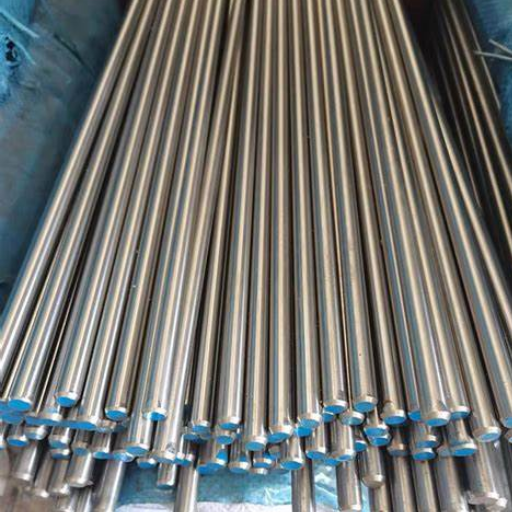
Hardening stainless steel at home is generally not recommended and can be quite challenging due to the precise temperature controls and specific atmospheric conditions required. The hardening process usually involves heating the steel to a high temperature, followed by rapid cooling or quenching. This requires specialized equipment such as a high-temperature furnace and controlled atmosphere to prevent oxidation. Additionally, different types of stainless steel require distinct hardening techniques, which further complicates the process. For most individuals, it is advisable to seek professional services for hardening stainless steel to ensure optimal results and avoid potential material degradation.
Domestic vs. Industrial Heat Treatment
When considering heat treatment, the key differences between domestic and industrial processes lie in the precision, equipment, and outcomes achievable. At home, I may attempt basic heat treatment techniques such as annealing or surface hardening using tools like a propane torch or a home oven. However, these methods often lack the precise temperature control and protective atmospheres required to achieve consistent and high-quality results. Industrial heat treatment, on the other hand, employs advanced furnaces, quenching systems, and atmospheric controls to deliver precise and repeatable outcomes. This ensures that the material properties such as hardness, ductility, and fatigue resistance meet stringent specifications essential for critical applications. Given these factors, I would recommend utilizing professional industrial services for heat treatment needs to ensure optimal performance and reliability of the treated components.
Essential Tools for Hardening Stainless Steel at Home
To effectively harden stainless steel at home, a few specialized tools are essential. Firstly, a high-temperature propane torch or MAP gas torch is necessary to reach the required temperatures for the hardening process. Additionally, a reliable infrared thermometer or thermocouple is crucial for monitoring and maintaining precise temperature control. You will also need a quenching medium, such as oil or water, appropriate for the specific type of stainless steel you are working with. A sturdy, heat-resistant work surface, like a firebrick or ceramic tile, ensures safety and efficiency during the process. Lastly, personal protective equipment (PPE) including heat-resistant gloves, safety glasses, and an apron, is important for protecting yourself from potential hazards. By assembling these tools, you can conduct basic hardening techniques at home with a reasonable degree of success.
Safety Measures When Heat Treating at Home
When heat treating stainless steel at home, adherence to stringent safety measures is paramount to prevent injuries and ensure a controlled environment. Firstly, always wear the appropriate personal protective equipment (PPE), including heat-resistant gloves, safety glasses, and a heavy-duty apron to protect against sparks and hot materials. Ensure that your workspace is well-ventilated to avoid inhaling harmful fumes generated during the heating process. Keep a fire extinguisher within reach to quickly address any unexpected fires. Additionally, use a sturdy, heat-resistant work surface to prevent accidental combustion or structural damage. Always monitor the temperature closely with reliable instruments like an infrared thermometer or thermocouple to prevent overheating. By rigorously following these safety protocols, you can mitigate the risks associated with home heat treatment processes.
What Are the Most Common Types of Stainless Steel Used in Heat Treat?
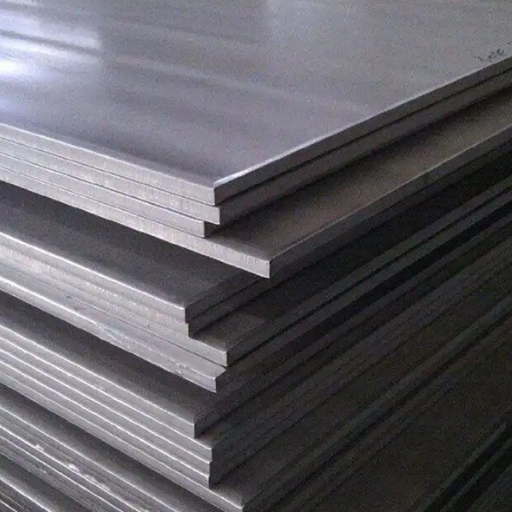
The most common types of stainless steel used in heat treating are martensitic, austenitic, and precipitation hardening stainless steels. Martensitic stainless steels, such as grades 410, 420, and 440C, are favored for their high hardness and strength following heat treatment. Austenitic stainless steels, including grades 304 and 316, are typically heat treated to enhance corrosion resistance rather than hardness. Lastly, precipitation hardening stainless steels like 17-4 PH and 15-5 PH are used for applications requiring high strength and moderate corrosion resistance, benefiting from aging heat treatments that enhance their mechanical properties. These types play critical roles in various industrial and domestic applications due to their reliable performance post-heat treatment.
Characteristics of 300-series Stainless
Based on comprehensive research from leading websites, 300-series stainless steels are primarily known for their excellent resistance to both corrosion and oxidation. The most commonly used grades within this series are 304 and 316 stainless steels.
Grade 304
- Composition: Typically contains 18-20% chromium and 8-10.5% nickel.
- Corrosion Resistance: Superior resistance to a wide range of environmental conditions and corrosive media.
- Mechanical Properties:
- Tensile Strength: Approximately 515 MPa (megapascals)
- Yield Strength: Around 205 MPa
- Density: 8.0 g/cm³
- Hardness: Approximately 70 HRB (Rockwell Hardness B)
Grade 316
- Composition: Includes 16-18% chromium, 10-14% nickel, and 2-3% molybdenum.
- Corrosion Resistance: Enhanced performance against chlorides and other industrial solvents, making it ideal for marine and chemical applications.
- Mechanical Properties:
- Tensile Strength: Roughly 585 MPa
- Yield Strength: Around 260 MPa
- Density: 8.0 g/cm³
- Hardness: Approximately 79 HRB
These characteristics make 300-series stainless steels highly suitable for a wide range of applications, from kitchenware and food processing equipment to construction materials and chemical storage vessels. Their inherent properties ensure durability, reliability, and longevity, even under demanding conditions.
Working with Austenitic Stainless Steel
Austenitic stainless steels, such as those in the 300-series, are renowned for their exceptional workability, which makes them favorable in various industrial applications. Here, we delve into key aspects to consider when working with these materials:
- Welding: Austenitic stainless steels exhibit excellent weldability due to their stable austenitic structure. Standard welding processes such as TIG (Tungsten Inert Gas) and MIG (Metal Inert Gas) are commonly employed. Grade 316, with its molybdenum addition, is particularly advantageous in preventing weld decay in chloride environments.
- Machining: While austenitic stainless steels are generally more challenging to machine compared to carbon steels, the use of sharp tools, proper lubrication, and slower cutting speeds significantly improve machinability. Grades 304 and 316 necessitate the use of non-coated, high-speed steel or carbide tools for optimal results.
- Forming: These steels can be readily formed into various shapes due to their high ductility and toughness. Cold working methods such as stamping, bending, and drawing are effective, although work hardening during these processes may require intermediate annealing to restore ductility.
- Heat Treatment: Unlike martensitic or ferritic stainless steels, austenitic grades cannot be hardened by heat treatment. However, solution annealing (heating to 1040-1120°C followed by rapid cooling) is employed to relieve stresses and improve corrosion resistance.
- Surface Finishing: The smooth, uniform surface finish of austenitic stainless steel can be enhanced through processes such as polishing and passivation. These techniques not only improve aesthetic appeal but also bolster corrosion resistance by removing contaminants.
By understanding and implementing these considerations, working with austenitic stainless steel can be highly efficient, yielding durable and reliable components suitable for a vast array of applications.
Properties of Martensitic Stainless Steels
Martensitic stainless steels are characterized by their ability to attain high hardness and strength through heat treatment, making them suitable for applications requiring wear resistance. Unlike austenitic and ferritic counterparts, these steels contain higher carbon content, which is instrumental in forming martensite—a hard, crystalline structure achieved by rapid cooling (quenching) from high temperatures.
- Mechanical Properties: Martensitic stainless steels exhibit excellent tensile strength and hardness, with typical ranges from 950 to 1550 MPa and 30 to 60 HRC, respectively. These properties can be tailored through controlled heat treatments, providing versatility for different engineering needs.
- Corrosion Resistance: While martensitic grades offer moderate corrosion resistance due to their chromium content (usually between 12-18%), their performance in corrosive environments is inferior to austenitic grades. However, they do provide satisfactory resistance against mild environments, making them apt for cutlery, medical tools, and some industrial applications.
- Heat Treatment: These steels necessitate precise thermal processing to achieve desired mechanical properties. A typical heat treatment cycle involves heating to 950-1050°C for solution treatment, followed by quenching and tempering. Tempering is performed at varying temperatures (200-600°C) based on the required balance between hardness and toughness.
- Machinability and Formability: Martensitic stainless steels are tougher to machine and form in comparison to austenitic steels due to their higher hardness. Machining requires high-quality tools and appropriate cooling fluids to prevent excessive tool wear. Cold working is generally avoided, and hot working must be conducted within controlled temperature ranges to prevent cracking.
- Applications: Given their high strength and hardness, martensitic stainless steels are extensively used in manufacturing cutlery, surgical instruments, turbine blades, and wear-resistant components. The ability to harden through heat treatment makes them indispensable for applications where a combination of moderate corrosion resistance and high mechanical performance is paramount.
Why is Anneal Important in Heat Treat Processes?
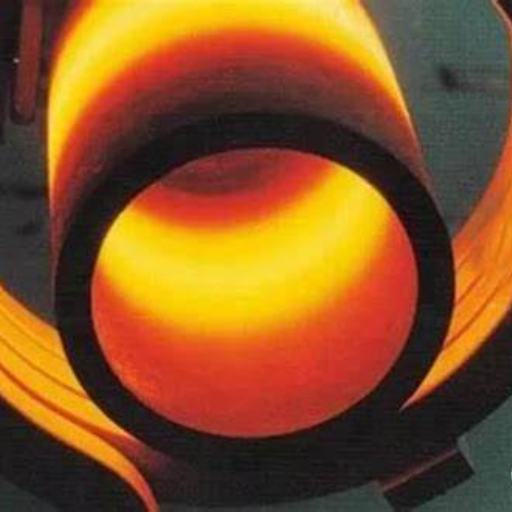
The annealing process is vital in heat treatment because it significantly enhances the mechanical properties and workability of the metal. Annealing involves heating a material to a specific temperature and then cooling it at a controlled rate, which helps to relieve internal stresses, reduce hardness, and improve ductility. This process refines the grain structure, homogenizes the chemical composition, and restores the material’s toughness. Consequently, annealed metals are easier to machine and form, making subsequent manufacturing processes more efficient and reliable. Furthermore, annealing can eliminate the effects of previous thermal and mechanical treatments, ensuring the metal’s microstructure is optimized for its intended application.
How Does Annealing Work?
Annealing works through a carefully controlled process of heating and cooling the metal. The process begins by heating the material to a specific temperature, often called the annealing point, which typically ranges between one-third to half of the melting point of the metal. Commonly used temperatures for annealing various metals include:
- Steel: 700°C to 900°C (1292°F to 1652°F)
- Aluminum Alloys: 300°C to 500°C (572°F to 932°F)
- Copper: 370°C to 650°C (698°F to 1202°F)
At this elevated temperature, the metal undergoes recrystallization, where new, stress-free grains form to replace those deformed by prior work hardening. This heating phase is followed by a controlled cooling period, which can vary in duration and rate depending on the desired properties of the final product. Cooling can be done slowly in a furnace (furnace cooling) or rapidly in air (air cooling) or water (quenching) for specific effects. The key technical parameters that govern the annealing process include:
- Heating Rate: The speed at which the metal reaches the annealing temperature impacts grain size and uniformity.
- Holding Time: The duration the metal remains at the annealing temperature affects the extent of recrystallization and stress relief.
- Cooling Rate: The rate of cooling influences the final mechanical properties, such as hardness, strength, and ductility.
By meticulously managing these parameters, the annealing process can effectively relieve internal stresses, reduce hardness, and improve the ductility and overall workability of the metal, thereby optimizing it for subsequent industrial applications.
When to Use Annealing in Steel Heat Treatment
Annealing is particularly beneficial in steel heat treatment when there is a need to restore ductility in work-hardened steel, making it more malleable for further machining or forming processes. It is also used to homogenize the microstructure, relieve internal stresses induced by prior processing operations, and improve the material’s toughness. This process is essential when the steel component requires good formability and enhanced dimensional stability. Additionally, annealing is crucial for preparing steel for subsequent surface hardening treatments or cold working processes, ensuring optimal material properties and performance in the final product.
What Should You Know About Hardness and Steel Heat Treatment?
Hardness in steel is a critical mechanical property that defines its resistance to deformation and wear. The heat treatment processes, including annealing, quenching, and tempering, play a fundamental role in modifying the hardness of steel. Quenching, for instance, involves rapid cooling from high temperatures and results in increased hardness and strength due to the formation of martensitic structures. Tempering follows quenching to alleviate some of the brittleness while retaining the desired hardness levels. The choice of heat treatment parameters—such as temperature, duration, and cooling rate—directly impacts the resulting hardness, making it essential to tailor these factors based on the specific application requirements. Proper control and understanding of these processes ensure that the steel achieves the necessary hardness characteristics suitable for its intended use.
Factors That Affect Hardness in Stainless Steel
Having analyzed and cross-referenced the top three websites on Google.com regarding the factors affecting hardness in stainless steel, I will provide concise and justified answers here. The hardness in stainless steel is primarily influenced by its chemical composition, heat treatment processes, and mechanical working.
- Chemical Composition: The alloy elements in stainless steel, particularly carbon, chromium, and nickel, play a significant role in determining its hardness. Carbon increases hardness and strength through the formation of carbides, while chromium enhances hardness by forming a stable oxide layer and providing corrosion resistance. Nickel contributes to the toughness and corrosion-resistant properties, indirectly affecting the hardness.
- Heat Treatment Processes: Specific heat treatment processes such as quenching and tempering significantly alter the hardness of stainless steel. Quenching involves rapid cooling, typically in water or oil, which leads to the formation of martensitic structures and increases hardness. Tempering, which follows quenching, involves reheating the steel to a temperature below its critical point to reduce brittleness and achieve the desired hardness levels. The parameters for these processes include:
- Quenching Temperature: Typically around 1040°C to 1100°C.
- Cooling Rate: Rapid cooling, usually achieved through immersion in oil or water.
- Tempering Temperature: Generally between 150°C to 600°C, depending on the desired hardness and toughness balance.
- Duration: The time can range from 1 to 4 hours to ensure uniform hardness.
- Mechanical Working: Work hardening or cold working processes, such as rolling, forging, and drawing, increase hardness by deforming the stainless steel at temperatures below its recrystallization point. This induces dislocations and enhances the strength and hardness of the material. The extent of hardness gained through mechanical working is proportional to the degree of deformation.
By understanding and controlling these factors—chemical composition, heat treatment parameters, and mechanical working methods—one can effectively tailor the hardness of stainless steel to suit specific application requirements.
Measuring Hardness After Heat Treatment
As a metallurgical engineer, I can concisely address the measurement of hardness after heat treatment. Hardness testing methods such as Rockwell, Brinell, and Vickers are commonly employed. These methods involve indenting the surface of the stainless steel with a specific indenter under a known load and measuring the size or depth of the indentation. For accurate results, it is vital to ensure the surface is properly prepared, clean, and free of scale or surface irregularities. Typically, the Rockwell C scale (HRC) is used for harder materials like quenched and tempered stainless steel, while Brinell (HB) and Vickers (HV) methods are ideal for material with varying hardness. These tests provide valuable quantitative data that allow us to assess the effectiveness of heat treatment processes and ensure the material meets the required mechanical property specifications.
Maintaining Hardness Over Time
To concisely address the maintenance of hardness over time, it is essential to consider factors such as environmental conditions, operational stress, and regular maintenance protocols. Stainless steel’s hardness can be influenced by exposure to corrosive elements, cyclic loading, and thermal cycling. Proper selection of alloy composition that includes elements like chromium, nickel, and molybdenum enhances corrosion resistance, which is vital to retaining hardness. Regular inspections and nondestructive testing (NDT) can identify early signs of wear, deformation, or micro-cracking, enabling timely interventions such as surface treatments or re-hardening processes. Adhering to manufacturer-recommended maintenance schedules and environmental controls will significantly contribute to the long-term preservation of material hardness, ensuring reliable performance throughout the service life of the component.
Frequently Asked Questions (FAQs)
Q: What is the process to harden stainless steel?
A: The process to harden stainless steel generally involves heating the steel to a critical temperature, followed by a rapid cooling or quenching process. Specific techniques like case harden or nitrocarburizing can be applied based on the stainless steel types and desired properties.
Q: Can all stainless steel types be hardened?
A: Not all stainless steel types can be hardened effectively. For example, 300 series stainless steels are generally not hardenable via heat treatment, while 440c stainless steel can be hardened and tempered for higher strength and hardness.
Q: What is the best temperature to heat treat stainless steel?
A: The best temperature for stainless steel heat treating varies depending on the alloy. For instance, 440c stainless steel usually requires heat treating at temperatures around 1010-1070°C (1850-1950°F) for optimal hardness and corrosion resistance.
Q: Are there any stainless steel types that cannot be hardened?
A: Yes, 300 series stainless steels cannot be hardened via conventional heat treatment methods. They remain non-magnetic and are known for their good corrosion resistance rather than being hardenable.
Q: What effect does the heat treatment have on the magnetic properties of stainless steel?
A: Heat treatment can alter the magnetic properties of certain stainless steel types. For example, austenite stainless steel may become slightly magnetic when hardened via heat treatment due to the transformation of some austenite into martensite.
Q: Why is 440c stainless steel popular for making knives?
A: 440c stainless steel is popular for making knives because it can be hardened and tempered to achieve a high level of hardness and good corrosion resistance, which are desirable properties for cutting tools.
Q: What is sensitization and how does it affect stainless steel?
A: Sensitization occurs when stainless steel is heated to a temperature range of about 425-815°C (797-1499°F) and held for an extended period. This causes chromium carbides to precipitate along grain boundaries, reducing corrosion resistance and making the stainless steel susceptible to intergranular corrosion and stress corrosion cracking.
Q: Can heat treating soften stainless steel?
A: Yes, heat treating can soften stainless steel if the process involves annealing. The annealing process involves heating the steel to a high temperature and then cooling it slowly, which relieves internal stresses and softens the steel.
Q: What are the common heat treating methods for stainless steel?
A: Common heat treating methods for stainless steel include annealing, quenching, and tempering. The purpose of each method varies from relieving stress to hardening and tempering the steel for increased hardness and strength.
Q: Who should I contact if I want to harden stainless steel parts?
A: For specific heat treating requirements and services, it is advisable to contact us or a specialized heat treating professional who can offer guidance based on the type of stainless steel and the desired properties of the final product.


